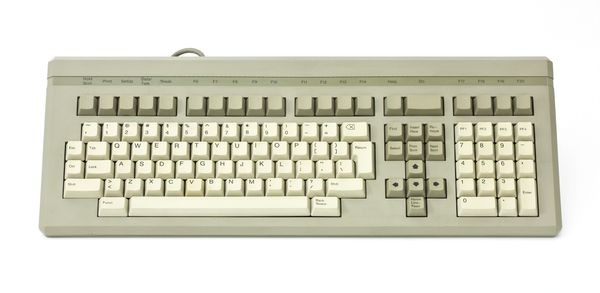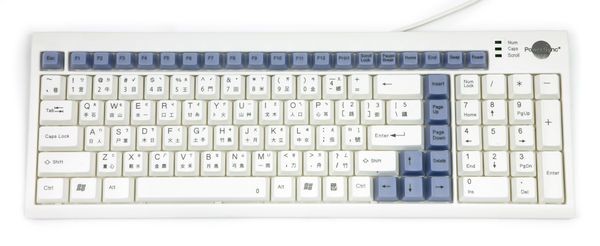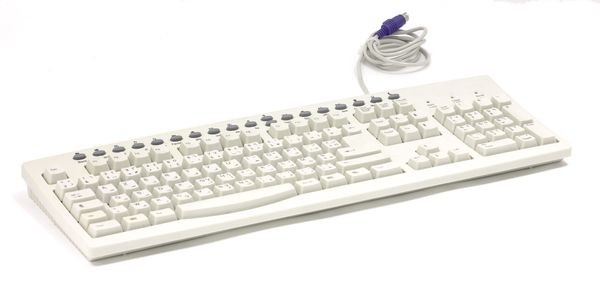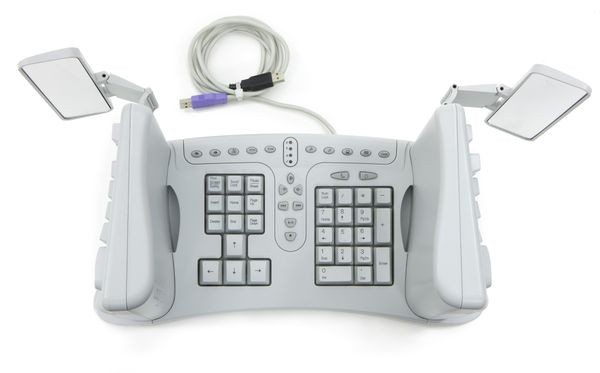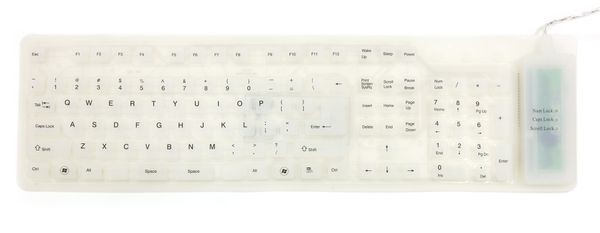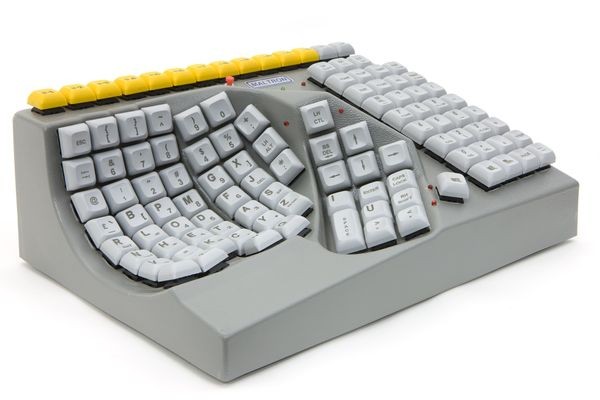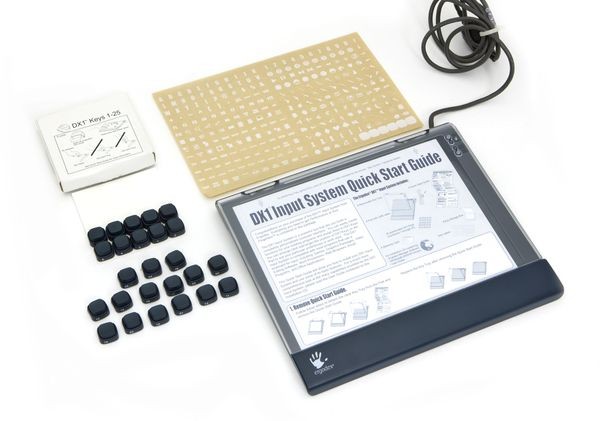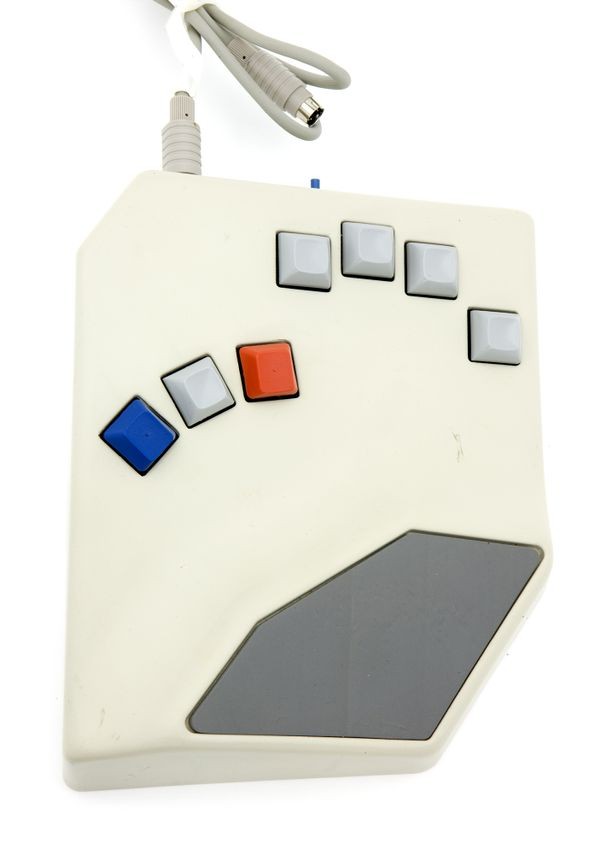Keyboards
DVORAK Keyboard
DVORAK keyboards arrange keys based on letter-frequency analysis. This is a “homebrew” version. They never seriously challenged QWERTY’s dominance.
Keyboards
With so many new elements to create, computer designers were happy not to re-invent text-based input and output. They used existing teletypes and automatic typewriters—including the established QWERTY keyboard.
Contrary to urban legend, QWERTY was designed to speed, not slow, typing. Patented in 1878, it limited interference between keys commonly struck in sequence.
QWERTY keyboard
Despite its ergonomic shortcomings, and claims that a well-trained typist can work faster with other layouts, the QWERTY keyboard remains the most widespread for users of Roman alphabets.
View Artifact DetailCabinet of Keyboard Curiosities
Designers have been creative, brilliant, playful, and sometimes misguided in devising ways for computers and humans to communicate with computers.
Some devices, such as mice, illustrate the evolution of solutions common today. Some represent technological or marketing dead ends. Others are niche devices for specific needs.
Do some look weird? What we use today may look equally quaint 100 years from now.
Chinese-language keyboard
This Taiwanese keyboard has a US American layout, but also supports three different Chinese input methods: the phonetic Zhujin and the character shape-based Cangjie and Dayi methods.
View Artifact DetailArabic-language keyboard
This keyboard supports both Roman and Arabic characters. Different layouts are used in the various countries that use the Arabic alphabet.
View Artifact DetailSafeType™ ergonomic keyboard
The key sizes and layout here are familiar, but the orientation is radically different. The hand position is supposed to prevent stress injuries. The mirrors show finger position.
View Artifact DetailSilicone rubber keyboard
Ever spill coffee on your keyboard? Get one of these. This water, dust and contaminant-resistant keyboard is suitable for industrial environments, hospitals, libraries and marine applications.
View Artifact DetailMaltron left-handed keyboard
Keyboard training expert Lillian Malt and electronic products manufacturer Stephen Hobday developed the Maltron keyboards in the 1970s to prevent repetitive-stress injuries.
View Artifact DetailDX1 Keyboard with user-relocatable keys
Don’t like your keyboard’s layout? With this one you can arrange keys any way you like.
View Artifact DetailBAT chording keyboard
Instead of having a separate key for each character, this commercial “chording” keyset expects the user to memorize combinations of keys and press them simultaneously. The thumb operates one of three keys.
View Artifact Detail


